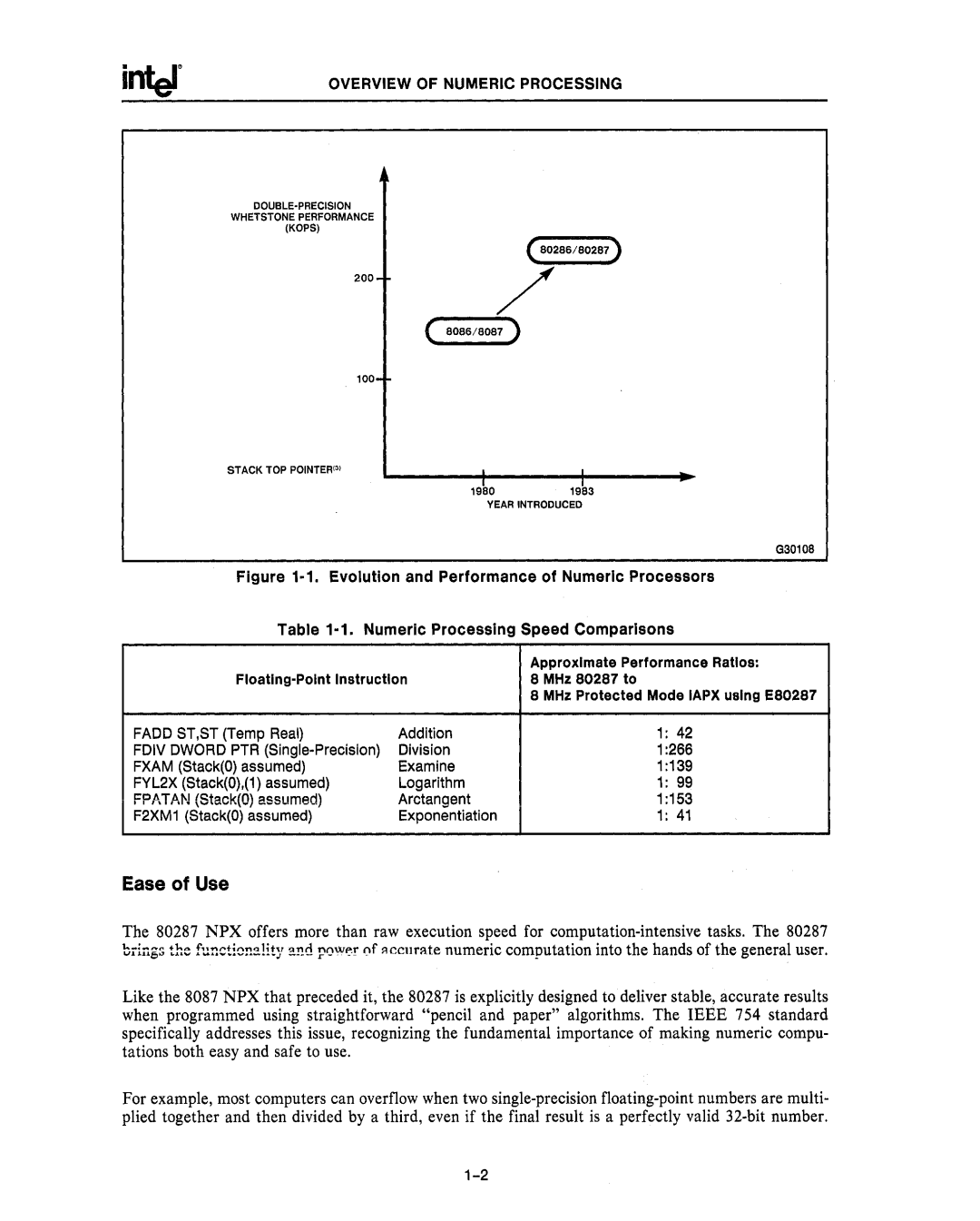
OVERVIEW OF NUMERIC PROCESSING
WHETSTONE PERFORMANCE
(KOPS)
( 80286/80287 )
200 | |
| |
| ( 8086/8087) |
100 |
|
STACK TOP POINTER'"
19801983 YEAR INTRODUCED
G30108
Figure 1-1. Evolution and Performance of Numeric Processors
Table 1-1. Numeric Processing Speed Comparisons
| Approximate Performance Ratios: | |
Floatlng'PolntInstruction | 8 | MHz 80287 to |
| 8 | MHz Protected Mode IAPX using E80287 |
FADD ST,ST (Temp Real) | Addition | 1: | 42 |
FDIV DWORD PTR | Division | 1:266 | |
FXAM (Stack(O) assumed) | Examine | 1:139 | |
FYL2X (Stack(O),(1) assumed) | Logarithm | 1: | 99 |
FPATAN (Stack(O) assumed) | Arctangent | 1:153 | |
F2XM1 (Stack(O) assumed) | Exponentiation | 1: | 41 |
Ease of Use
The 80287 NPX offers more than raw execution speed for
Like the 8087 NPX that preceded it, the 80287 is explicitly designed to deliver stable, accurate results when programmed using straightforward "pencil and paper" algorithms. The IEEE 754 standard specifically addresses this issue, recognizing the fundamental importance of making numeric compu- tations both easy and safe to use.
For example, most computers can overflow when two
